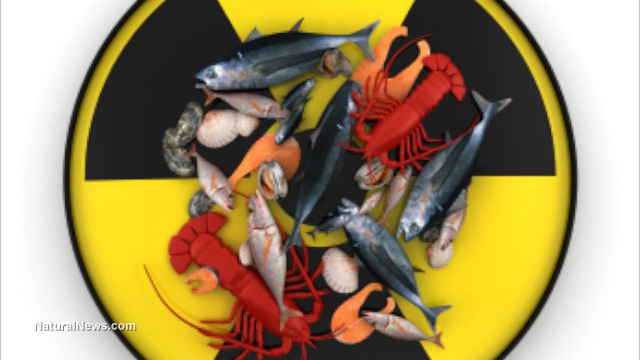
Increased levels of cesium and strontium radionuclides appeared in commercially important fish along the Pacific coast of North America. Furthermore, bluefin tuna, salmon, and other affected fish displayed cancerous tumors.
These species migrate around the oceans of the world, including Japanese waters. The National Oceanic and Atmospheric Administration (NOAA) believed the higher concentrations of radionuclides came from the fishes' passage through the contaminated waters near the Fukushima nuclear disaster site.
But radiation exposure doesn't just come from heavily publicized events involving food fish swimming through irradiated waters. Many of the food products on the shelves of grocery stores are exposed to radiation to prolong their shelf lives. (Related: Shocking new study finds that Fukushima disaster exposed EVERY living human to the radiation dose of a full chest x-ray.)
Many food products get irradiated by toxic nuclear waste material
"Food irradiation (the application of ionizing radiation to food) is a technology that improves the safety and extends the shelf life of foods by reducing or eliminating microorganisms and insects," according to the U.S. Food and Drug Administration (FDA).
Many foods get bombarded with ionizing radiation before being sold to the public. Affected animal-derived foods include beef, crustacean seafood, mollusk seafood, pork, poultry, and shell eggs. Plant-based foods include fruits, vegetables, seasonings, spices, and sprouting seeds.
The products get treated with different kinds of radiation. Some of the most common irradiation methods involve electron beams, gamma rays, X-rays, and cesium-137.
Cesium-137 is an extraordinarily radioactive and unstable radionuclide. A waste product of nuclear-related processes, it is one of the primary culprits for the ongoing radioactive contamination at Fukushima.
The FDA claims that irradiated foods are safe for human consumption. However, the federal agency has not yet determined what levels of radiation exposure in food can be considered safe or unsafe.
"There is no safe dose of radiation," warned researcher Edward P. Radford, the chairman of the Biological Effects of Ionizing Radiations (BEIR) III committee that investigated the Fukushima disaster.
Take these safety measures against radiation exposure from food and water supplies
Given the prevalence of irradiated food and radioactive contaminants, radiation exposure is inevitable. However, it is possible to reduce its harmful effects on the body.
First, start taking iodine supplements. High concentrations of clean iodine in the body will block radioactive counterparts from binding to hormone receptors in the thyroid. Make sure the supplement has iodine and potassium iodide.
Next, increase the intake of vitamin C. A powerful antioxidant that scavenges free radicals, vitamin C strengthens the immune system and helps eliminate radioactive contaminants in the body. It is also safe to take in massive doses every day.
Consuming chlorella can also minimize radiation exposure. In addition to protecting against radiation, the green alga also binds heavy metals and toxins, allowing them to get purged from the body.
Look up other natural supplements that serve as radiation chelators. Curcumin, resveratrol, selenium, and zinc can get rid of irradiated iodine from the body.
Stop getting irradiated food from grocery stores. Instead, buy fresh foods at local sources that practice organic farming methods.
Last but not least, install water filtration devices at home to ensure the safety of drinking water. Use either reverse osmosis units or gravitation filtration systems. Don't skimp on the quality of the water filter – the more toxins it removes from the water, the lower the levels and risk of radiation exposure.
Sources include:
Please contact us for more information.






















